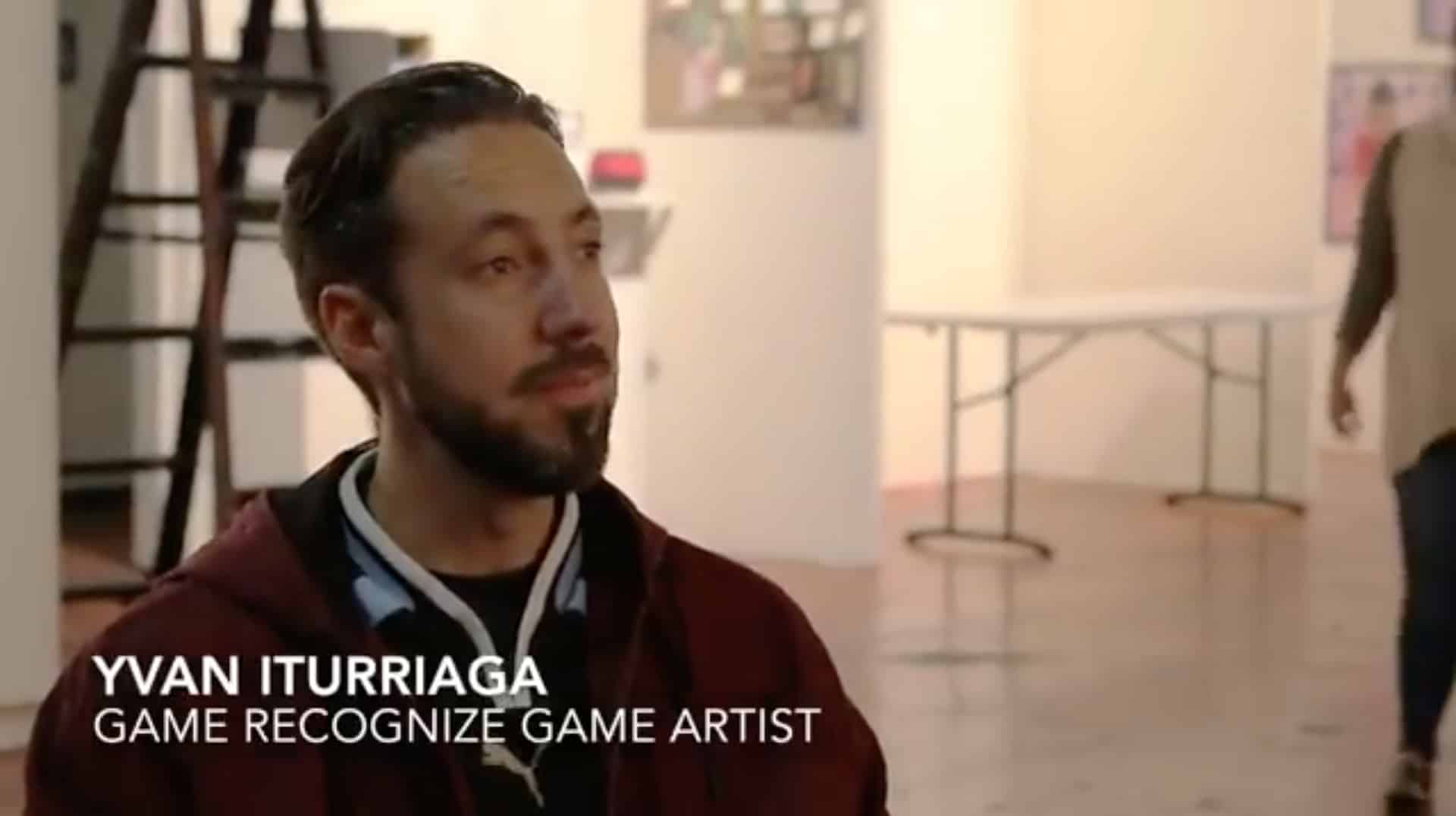Yvan Iturriaga is a director and producer. His work is on view as a part of Game Recognize Game, a deep inquiry into the power and potential of sports as a culture-building institution for social change. The first exhibition in the 2017–2018 season of the SOMArts Curatorial Residency, this group exhibition built an immersive environment for creativity and play, inviting audience members to bring play inside the gallery walls.
Since you’re normally a director and producer, what was this experience like? How does it compare to the art you’re used to creating?
This was a very different experience for me, I’m used to working on a very traditional film/tv format where it’s mostly about images. This was a project where we focused mainly on sound and audio — at least the Dark Side of the Game or Show Me How You Play. It’s about immersing yourself into the sounds of sport. It’s a very experimental piece where you combine sounds from sports with images that arent necissarily related to the games that you’re hearing to make you think how those relate to society. The building of the wall is more of a visual art.. I like to do carpentry so it’s something I always liked doing.
It took less time than what it takes to make a solid narrative, it’s a lot more work. This being a lot more fluid and free and goes with the vibe of the event – which is to play! So the act of playing made it more fun and a little bit quicker.
What would you identify as the “dark side” of sports?
I think especially in american football, I see a correlation with militarism. Sports in the US are very much seen as aggressive, win-by-all-cost type of mentality — that’s a “dark side.” We lose track of joy and play, but this is what makes for best players and teams. Players who have grown up with joy in their game like playing in the street then translate it into the professional field, you see that in Brazil a lot. I think, in the US, materialism like playing just for money and other corporate pressures that are placed in the bodies, as well as the hyper-violence are the darkest aspects of it.
How did creating an interactive piece contribute to the importance and meaning of the construction of the wall?
A lot of people don’t go and visit the actual wall, so when you’re there, it shocks some people that it even exists, that there’s even a thing that separates land and people. The creation of this piece allows you to kind of visit it as well as allows you to do anything you want to – throw a ball at it, play over it, or imagine what’s on the other side. We have lines of games in front of this wall to make you imagine what it could be like to bring it down or that this could be a place of joy rather than separation. It makes you really think about what these walls are doing to us and the emotional effect it has on the world.
About the Artist
Yvan Iturriaga is a director and producer. His work recent work includes The North Pole Show, a comedic web series on the interplay of climate justice and gentrification, PBS specials such as The Storm That Swept Mexico and A Photographer’s Journey. His short film Beep was an official selection at the San Francisco Latino Film Festival. Yvan grew up living in the extended Chilean exile community, before landing as a teenager in the city he now calls home: Oakland, CA.
Check out his website: iskracine.com
Interview and Video by: Jade Cabrera

